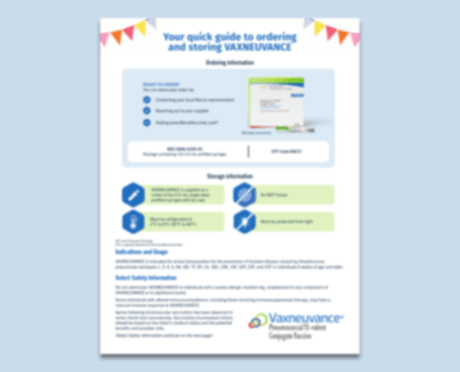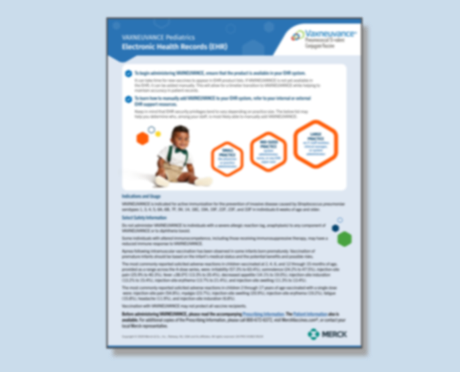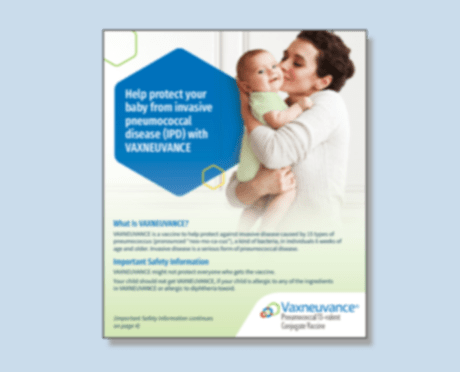Do not administer VAXNEUVANCE® (Pneumococcal 15-valent Conjugate Vaccine) to individuals with a severe allergic reaction (eg, anaphylaxis) to any component of VAXNEUVANCE or to diphtheria toxoid.
Some individuals with altered immunocompetence, including those receiving immunosuppressive therapy, may have a reduced immune response to VAXNEUVANCE.
Apnea following intramuscular vaccination has been observed in some infants born prematurely. Vaccination of premature infants should be based on the infant’s medical status and the potential benefits and possible risks.
The most commonly reported solicited adverse reactions in children vaccinated at 2, 4, 6, and 12 through 15 months of age, provided as a range across the 4-dose series, were: irritability (57.3% to 63.4%), somnolence (24.2% to 47.5%), injection-site pain (25.9% to 40.3%), fever ≥38.0°C (13.3% to 20.4%), decreased appetite (14.1% to 19.0%), injection-site induration (13.2% to 15.4%), injection-site erythema (13.7% to 21.4%), and injection-site swelling (11.3% to 13.4%).
The most commonly reported solicited adverse reactions in children 2 through 17 years of age vaccinated with a single dose were: injection-site pain (54.8%), myalgia (23.7%), injection-site swelling (20.9%), injection-site erythema (19.2%), fatigue (15.8%), headache (11.9%), and injection-site induration (6.8%).
The reported solicited adverse reactions in children 7 through 11 months of age who received 3 doses of VAXNEUVANCE were: fever ≥38.0°C (21.9%), irritability (32.8%), injection-site erythema (28.1%), somnolence (21.9%), injection-site swelling (18.8%), injection-site pain (18.8%), injection-site induration (17.2%), decreased appetite (15.6%), and urticaria (1.6%).
The reported solicited adverse reactions in children 12 through 23 months of age who received 2 doses of VAXNEUVANCE were: fever ≥38.0°C (11.3%), irritability (35.5%), injection-site pain (33.9%), somnolence (24.2%), decreased appetite (22.6%), injection-site erythema (21.0%), injection-site swelling (14.5%), and injection-site induration (8.1%).
Vaccination with VAXNEUVANCE may not protect all vaccine recipients.
Before administering VAXNEUVANCE, please read the accompanying Prescribing Information. The Patient Information also is available.





